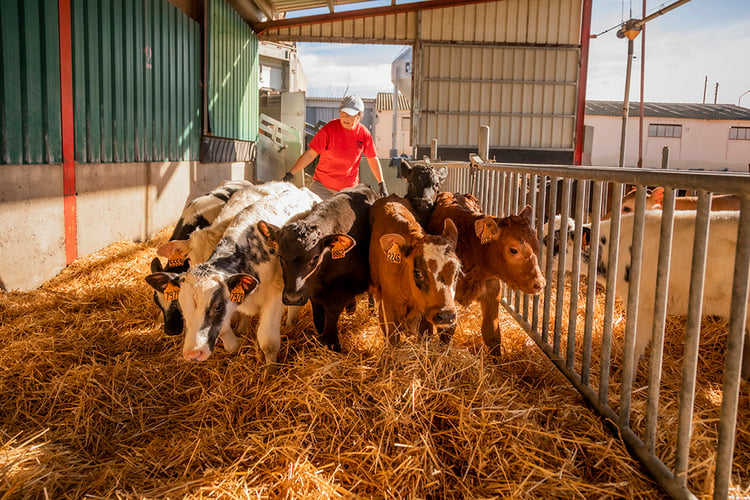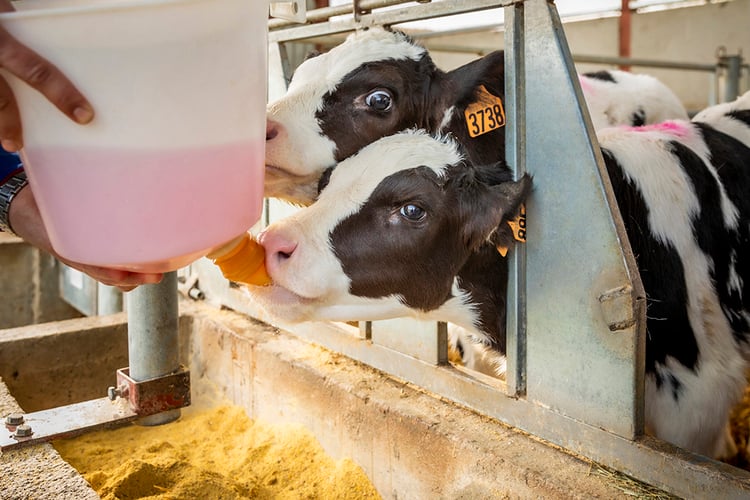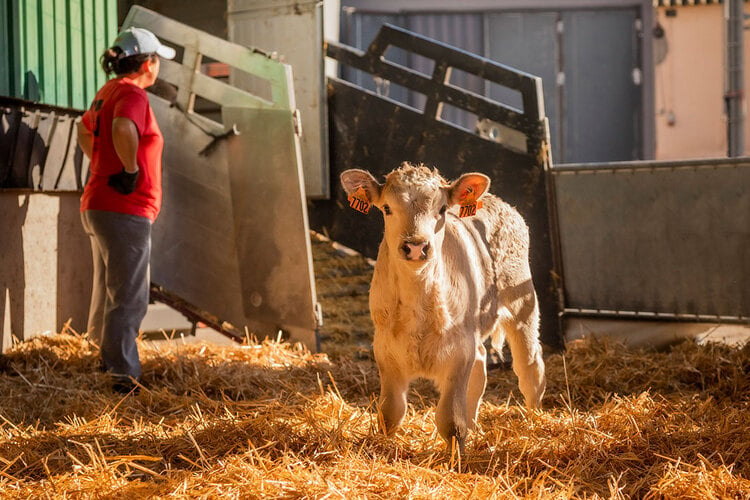
- LifeStart
- Lactobalance
- Lifestart themes
Key takeaways from the research
- Calves treated with oral electrolytes should always have access to water
- OES solutions should be provided in between milk feedings and never be mixed with milk or calf milk replacer
- The osmolality of an OES should be considered to reduce the risk of hypernatraemia
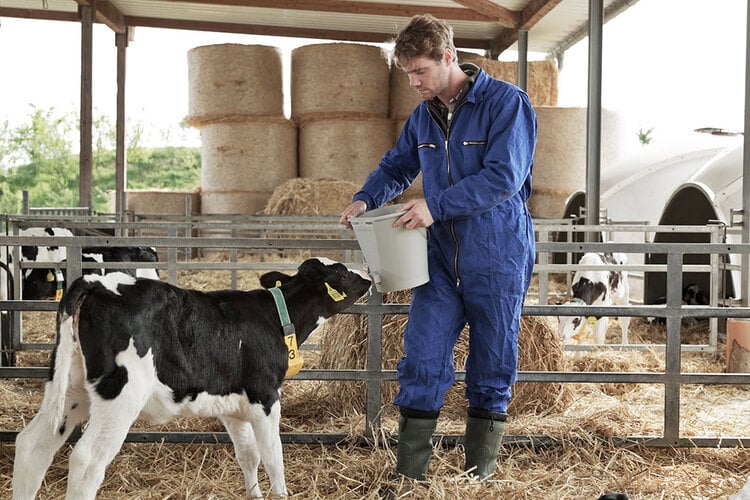
Calves with diarrhoea that are fed hypertonic electrolytes mixed with CMR without access to water will develop hypernatraemia
Calf diarrhoea is a common problem in young dairy calves and it is the most frequent cause of neonatal calf mortality. Oral electrolyte solutions (OES) are commonly used to treat this problem. Mixing OES with whole milk or calf milk replacer has become a common practice as it reduces labour. Whole milk or calf milk replacers do already contain high concentrations of lactose (140 to 230 mmol/L) and sodium (17 to 80 mmol/L[1]. As a consequence, tolerance levels with regard to osmolality can be exceeded, especially in systems where access to water is not available. Wilms et al.[2] studied the risks associated with the administration of a commercial OES with a high osmolality via calf milk replacer to calves without access to fresh water.
Study design
A total of 68 male Holstein, aged between 15 and 19 days were monitored for signs of diarrhoea and those calves that did go down with scours were divided into 2 groups which were treated as follows:
• Commercial OES with high osmolality (n=14)
• Control with whey powder (n=12)
Treatments were administered over a 4 day period into calf milk replacer (2.5 L at 08.00 h and 17.30 h) and into water (3 L at 13.00 h and 22.00 h), without access to fresh water in between feedings. Treatments were never drenched.
Results
Water intake did not differ between the 2 groups. The calves treated with OES had a higher incidence of diarrhoea at days 3, 4 and 5 (see figure 1).
Figure 1, Diarrhoea incidence in calves fed oral electrolyte solutions or a placebo in calf milk replacer and water without fresh water access. Significant differences at each time point are indicated by * (P ≤ 0.05) and † (P < 0.1)+.
Hypernatraemia (serum Na > 145 mmol/L) occurred in 71% of calves fed OES within 48 h after the first OES administration. Development of acute hypernatraemia (serum Na > 160 mmol/L) occurred in 21% of calves fed OES. Additionally, there was a significant treatment by time interaction for serum urea, which was higher on days 3 and 4 in calves fed OES (P = 0.01).
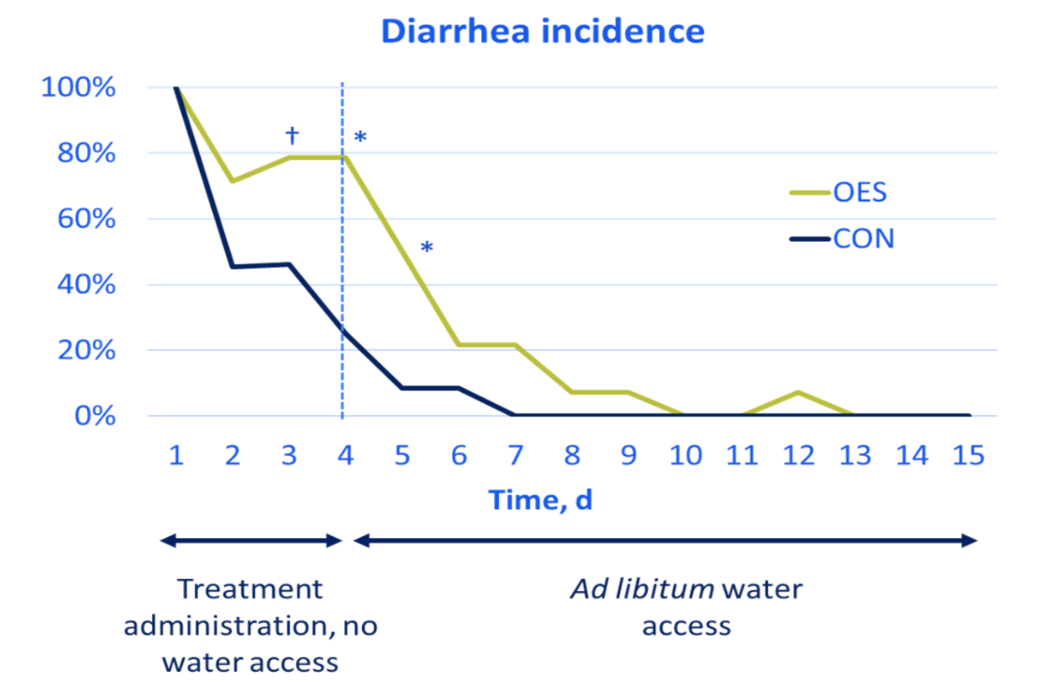
Conclusion
Administration of OES in calf milk replacer without access to water prolonged recovery from diarrhoea. Additionally, calves fed OES developed various degrees of hypernatraemia. Calves should therefore have access to water if they are being treated with electrolytes and electrolytes should be given with water in between milk feedings and never be mixed with calf milk replacer. Furthermore, the osmolality of the OES should be a point of consideration.
References
[1] Byers, S.R., A.S. Lear, and D.C. Van Metre. 2014. Sodium balance and the dysnatremias. Vet. Clin. North Am. - Food Anim. Pract. 30:333–350.
[2] Wilms, J, Leal, L. and J. Martín-Tereso, Hypernatremia in diarrheic calves fed electrolytes mixed with milk replacer without access to water, 2019, Oral presentation at the ICPD congress.

